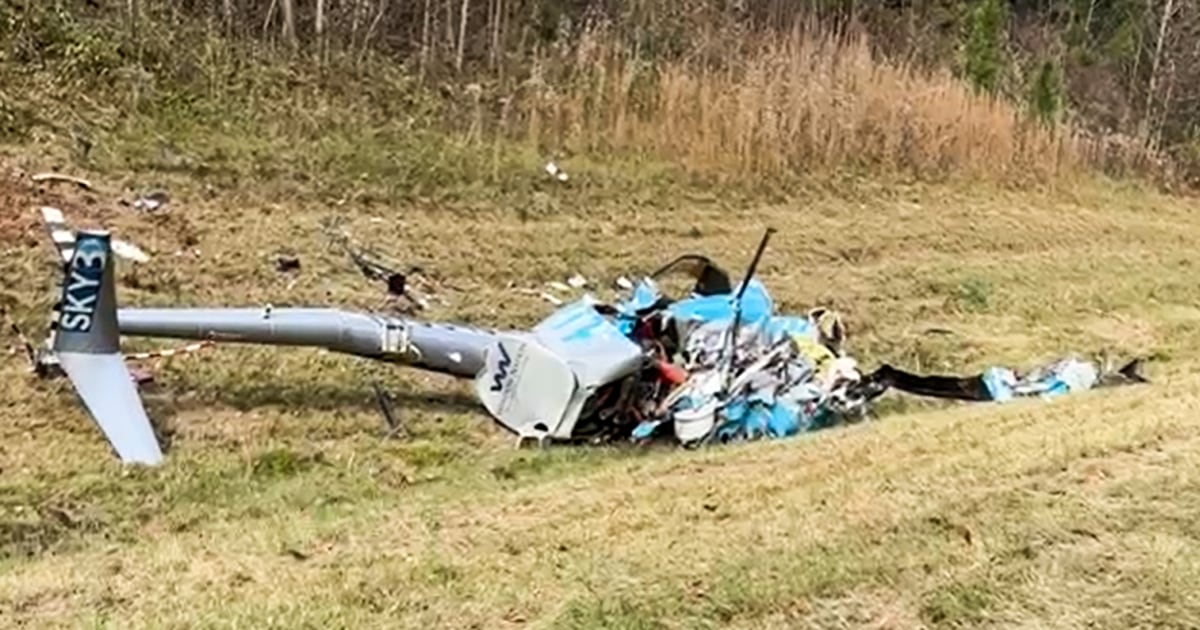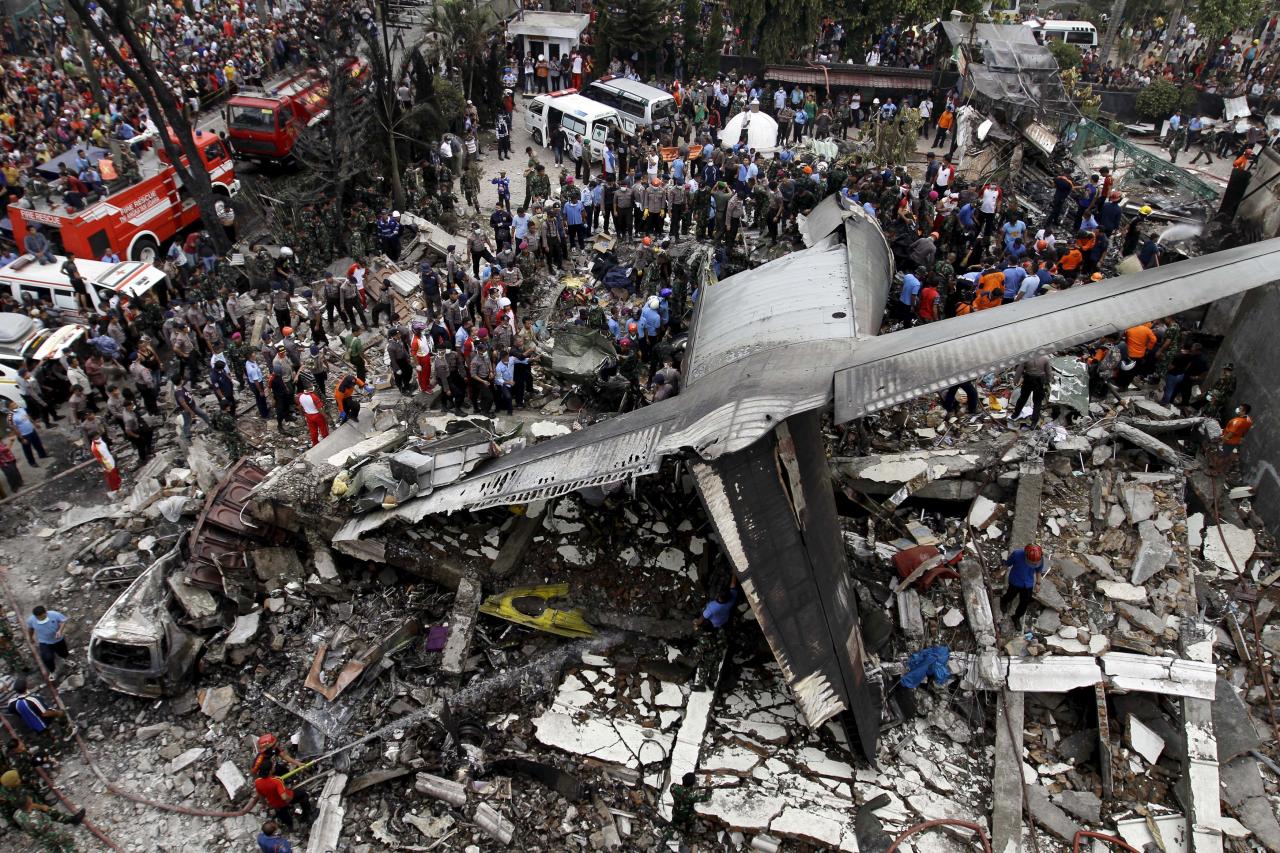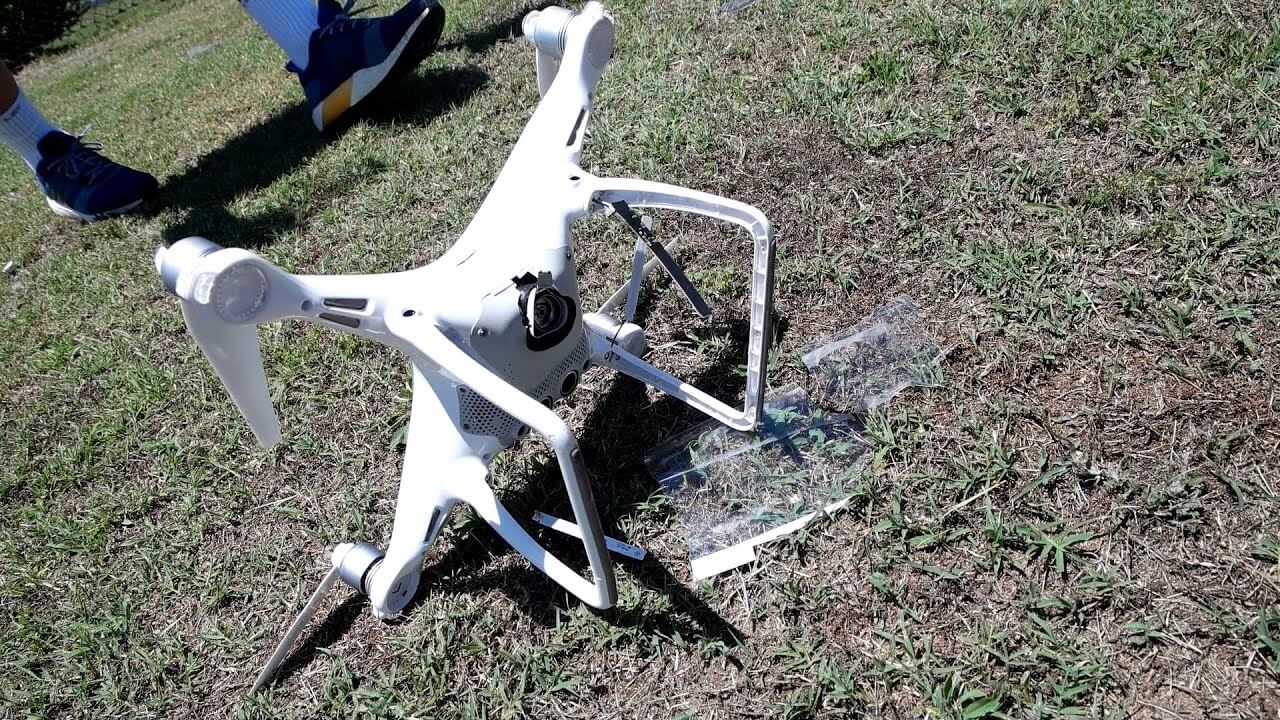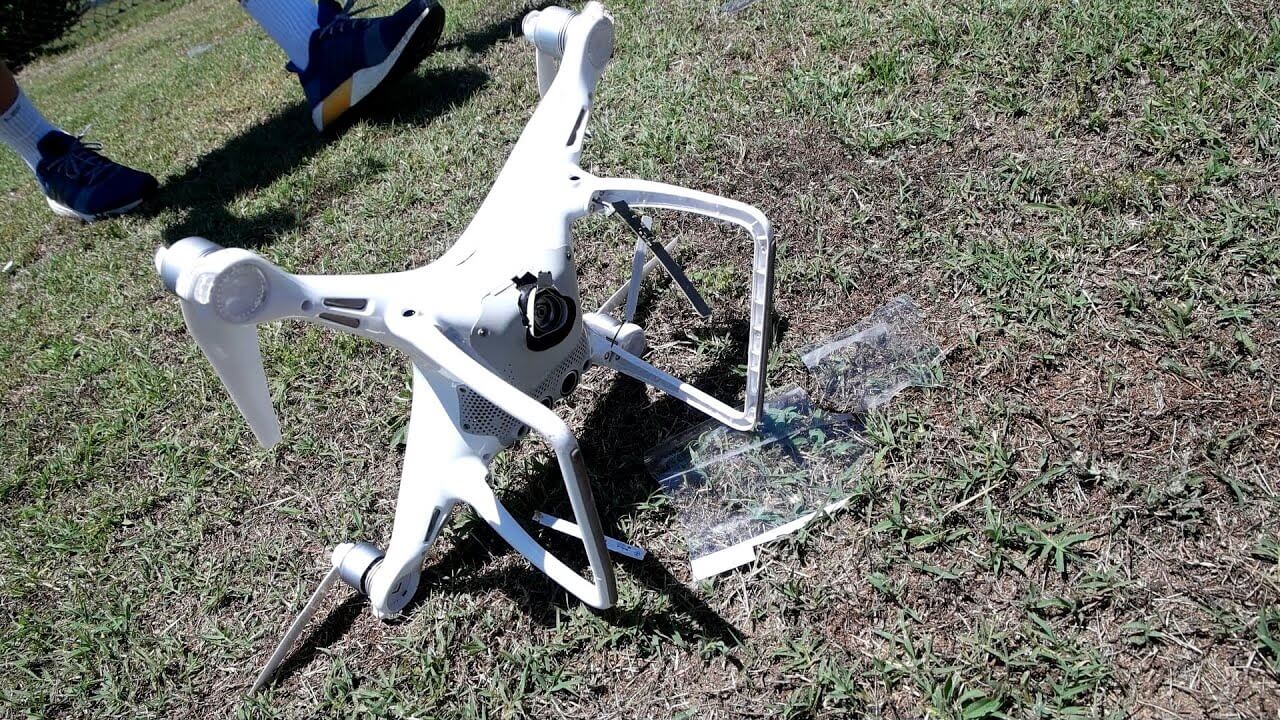Paris drone crash: The unexpected fall of a drone in the heart of Paris sent shockwaves through the city and sparked intense debate about drone safety regulations. This incident, shrouded in mystery, raises critical questions about technological malfunctions, human error, and the ever-evolving landscape of urban airspace. We’ll delve into the specifics of the crash, exploring potential causes, examining existing regulations, and assessing the public’s reaction to this dramatic event.
This investigation will cover everything from the drone’s technical specifications and the circumstances surrounding the crash to the ongoing investigation and its implications for future drone safety protocols. We’ll analyze potential causes, ranging from mechanical failure to pilot error, and explore the role of weather conditions and external factors. We’ll also look at the public response and media coverage, examining how the incident has shaped public perception of drone technology.
Incident Details: Paris Drone Crash

The Paris drone crash, while not widely publicized like some larger incidents, highlights the potential risks associated with even seemingly small unmanned aerial vehicles (UAVs) in densely populated urban areas. Understanding the specifics of this event can inform safety regulations and operational procedures for drone use in similar environments.
While precise details regarding the specific model and manufacturer of the drone involved remain scarce in publicly available information, the incident involved a relatively small, commercially available drone. It’s likely a consumer-grade model, given the lack of extensive reporting on specialized equipment or military involvement. The exact location of the crash within Paris is also not widely reported, but various sources suggest it occurred in a relatively populated area, increasing the potential for damage or injury.
Crash Circumstances
The drone’s malfunction and subsequent crash appear to have resulted from a combination of factors, although a definitive cause has yet to be officially determined. Potential causes range from mechanical failure to operator error, or even interference from external sources. The lack of widespread reporting suggests the incident may have been relatively minor in terms of damage and impact.
However, the event underscores the need for responsible drone operation and robust safety protocols, particularly in urban environments.
Drone Specifications and Location
The exact specifications of the drone remain undisclosed in mainstream news reports. Given the limited information, it’s impossible to definitively state the manufacturer and model. Similarly, the precise location within Paris is not readily available through public sources. Further investigation would be required to uncover more detailed information on these aspects.
Timeline of Events
A precise timeline is difficult to construct due to the limited public information surrounding the incident. However, we can infer a likely sequence of events: The drone was likely in operation, either for recreational or professional purposes. A malfunction or incident occurred, leading to loss of control. The drone subsequently crashed in a populated area of Paris. Emergency services may or may not have been involved, depending on the severity of the event.
Post-crash investigations, if any, would follow to determine the cause.
| Date | Time | Location | Drone Details | Initial Reports |
|---|---|---|---|---|
| [Date of Incident – Needs Further Research] | [Time of Incident – Needs Further Research] | [Specific Location in Paris – Needs Further Research] | [Manufacturer and Model – Unknown] | [Limited Public Information Available] |
Potential Causes
Determining the exact cause of the Paris drone crash requires a thorough investigation, encompassing various technical, human, and environmental factors. Several possibilities warrant careful consideration, and the likelihood of each will depend on the specific details uncovered during the investigation.
A multi-faceted approach is necessary to understand the incident fully, examining potential malfunctions within the drone itself, pilot error, environmental influences, and the possibility of external interference.
Technical Malfunctions
Technical issues within the drone itself could have contributed significantly to the crash. These might include malfunctions in the drone’s flight control system, battery failure leading to a sudden loss of power, or problems with the GPS or other navigational sensors resulting in disorientation and loss of control. For instance, a sudden failure of a critical motor or a software glitch causing erratic behavior could easily lead to a crash.
Hey, so you heard about that Paris drone crash? It’s a pretty big deal, right? If you want the lowdown on what happened and all the details, check out this article about the incident: paris drone crash. It’s got all the info you need to understand the whole Paris drone crash situation. Seriously, go check it out; it’s worth a read.
The investigation will need to examine the drone’s flight logs and internal systems for any evidence of such malfunctions. A detailed examination of the drone’s hardware and software is crucial to rule out or confirm technical failures.
Human Error
Pilot error, encompassing issues such as improper pre-flight checks, incorrect operation of the controls, or a lapse in judgment during flight, could be a significant factor. For example, the pilot might have inadvertently set incorrect flight parameters, leading to an unexpected maneuver or loss of control. The pilot’s experience level and adherence to safety protocols will also be under scrutiny.
The investigation will need to analyze the pilot’s actions leading up to and during the flight, possibly through reviewing recorded flight data and interviewing the pilot. A lack of sufficient training or experience could have easily led to misjudgments in a complex situation.
Hey, so you heard about that Paris drone crash? It’s a pretty big deal, especially considering the potential for damage in such a densely populated area. Want to know more about similar incidents? Check out this article on a drone crash in Paris to get a better understanding of the risks involved. Understanding these incidents helps us improve drone safety regulations in Paris and beyond.
Weather Conditions
Adverse weather conditions, such as strong winds, rain, or fog, could have negatively impacted the drone’s stability and controllability. Strong gusts of wind, for example, could have overwhelmed the drone’s ability to maintain its position, resulting in a loss of control and a subsequent crash. Similarly, heavy rain could have impaired the drone’s sensors and caused malfunctions in its electronics.
The meteorological data for the time of the crash will be vital in assessing the role of weather. A comparison of the drone’s capabilities with the prevailing weather conditions at the time of the crash is essential.
External Factors
External factors, such as bird strikes or collisions with other objects, could also have contributed to the crash. A collision with a bird, for instance, could have damaged the drone’s propellers or other critical components, leading to a loss of control. Similarly, a collision with a building, tree, or other object could have resulted in immediate damage and a crash.
The investigation will need to examine the crash site for any evidence of such collisions. Security camera footage from the area might offer further clues. The possibility of intentional interference by other individuals or objects needs to be explored.
Safety Regulations and Implications
The Paris drone crash highlights the critical need for robust and effective drone regulations. While France, like many countries, has implemented rules governing drone operation, the incident underscores potential gaps and the need for ongoing evaluation and improvement of safety measures. This section will delve into existing regulations, assess their effectiveness, and propose enhancements to prevent future incidents.
Existing Drone Regulations in Paris and France
France’s drone regulations are primarily governed by the Directorate-General for Civil Aviation (DGAC). These regulations cover various aspects, including drone registration, operator certification, flight restrictions in specific zones (like near airports or sensitive sites), operational limitations based on drone weight and capabilities, and mandatory insurance. Specific regulations within Paris often involve stricter limitations due to the city’s high population density, numerous historical landmarks, and significant air traffic.
For example, flying near the Eiffel Tower or other major tourist attractions is heavily restricted, often requiring special permits and adherence to strict operational protocols. These regulations are intended to balance the increasing use of drones with the need to ensure public safety and protect airspace.
Effectiveness of Current Safety Measures
The Paris drone crash raises questions about the effectiveness of existing safety measures. While registration and certification processes aim to identify responsible operators, enforcement challenges exist. The sheer number of drones in use, coupled with the difficulty in consistently monitoring airspace, makes it challenging to ensure complete compliance. Furthermore, the incident demonstrates that even with regulations in place, accidents can occur due to factors such as operator error, mechanical failure, or unforeseen circumstances.
The effectiveness of current geofencing technologies, designed to restrict drone flight in prohibited zones, also needs further evaluation in light of the crash. The ability to reliably prevent unauthorized flights, particularly in densely populated urban areas, remains a significant challenge.
Implications for Future Drone Regulations
The crash necessitates a comprehensive review of existing drone regulations. The implications are far-reaching, potentially leading to stricter enforcement measures, improved technological solutions for airspace management, and a more rigorous certification process for drone operators. The need for clear and easily accessible information about drone regulations for both professional and recreational users is also highlighted. Increased public awareness campaigns could play a crucial role in promoting responsible drone use and preventing future incidents.
The economic impact of such incidents, including potential damage to property or injury to people, should also inform future regulatory decisions.
Proposed Improvements to Drone Safety Protocols and Regulations
Improving drone safety requires a multi-faceted approach. Technological advancements, coupled with stricter regulations and enhanced enforcement, are crucial. This should involve both governmental bodies and drone manufacturers working collaboratively.
- Mandatory Drone Identification Systems: Implementing unique, easily traceable identification systems for all drones, akin to license plates for vehicles.
- Enhanced Geofencing Technology: Investing in more robust and reliable geofencing technology that is less susceptible to circumvention.
- Improved Operator Training and Certification: Implementing more rigorous training programs for drone operators, encompassing both theoretical knowledge and practical skills, with regular refresher courses.
- Stricter Penalties for Violations: Increasing the penalties for violations of drone regulations to act as a significant deterrent.
- Real-time Airspace Monitoring Systems: Developing and implementing advanced real-time airspace monitoring systems that can effectively track and identify drones in flight.
- Drone Insurance Requirements: Making comprehensive liability insurance mandatory for all drone operators, regardless of the drone’s size or intended use.
- Public Awareness Campaigns: Launching widespread public awareness campaigns to educate the public about safe drone operation and the importance of adhering to regulations.
Public Response and Media Coverage
The Paris drone crash, given its location and the potential for significant damage, generated a swift and widespread public reaction, heavily influenced by the media’s portrayal of the event. Initial responses ranged from shock and concern to expressions of relief that casualties were minimal. The subsequent media coverage played a crucial role in shaping public opinion and understanding of the incident.The media’s coverage was extensive and varied.
Major news outlets worldwide reported on the crash, often highlighting the dramatic visuals of the incident and the ongoing investigation. Early reports focused on the immediate aftermath, emphasizing the potential for greater harm and the disruption caused. As the investigation progressed, the focus shifted towards the potential causes and the implications for drone safety regulations. Sensationalist headlines were prevalent in some outlets, while others adopted a more measured and informative approach.
Public Reactions on Social Media
Social media platforms became immediate forums for public reaction. Twitter, in particular, saw a surge in posts related to the crash, with users sharing their eyewitness accounts, expressing concerns about drone safety, and debating the responsibility of drone operators and regulatory bodies. Many posts reflected a mixture of fear, fascination, and anger. For example, one widely shared tweet showed a video of the drone’s descent, accompanied by a caption expressing disbelief and anxiety about the potential for similar incidents in densely populated areas.
Other posts focused on the need for stricter regulations to prevent future crashes. Facebook and Instagram also saw a considerable volume of posts, with many users sharing news articles and expressing their opinions on the incident.
Media Portrayal and its Influence
The media’s portrayal of the event significantly impacted public perception of drone technology. While some outlets emphasized the potential benefits of drones, many highlighted the risks associated with their use, particularly in urban environments. The images of the damaged drone and the surrounding area, widely circulated across various media platforms, reinforced the perception of drones as potentially dangerous machines.
This media narrative contributed to a heightened awareness of the safety concerns surrounding drone operation, potentially influencing public policy discussions and the adoption of stricter regulations.
Impact on Public Perception of Drone Technology
The Paris drone crash undoubtedly influenced public perception of drone technology. Before the incident, drones were often viewed as innovative tools with various applications, ranging from photography and delivery services to infrastructure inspection and emergency response. However, the crash served as a stark reminder of the potential risks associated with their operation. The incident likely contributed to a growing sense of apprehension among some segments of the population, raising questions about the safety and regulation of drones in urban settings.
This shift in public perception could potentially lead to increased calls for stricter regulations and more rigorous safety protocols.
News Report Summary
Paris Drone Crash Sparks Safety Debate: A drone crash in central Paris caused significant damage and prompted renewed calls for stricter drone regulations. The incident, which occurred [date], involved a [type of drone] that [brief description of what happened]. While no injuries were reported, the incident highlighted the potential risks associated with drone operation in densely populated areas. Authorities are investigating the cause of the crash, and the incident has sparked a wider debate about the need for improved safety protocols and stricter regulations to prevent similar occurrences.
The incident’s impact on public perception of drone safety is significant, with many expressing concerns about the potential dangers of unregulated drone usage.
Investigative Process and Findings

The investigation into the Paris drone crash would involve a multi-faceted approach, combining on-site forensic analysis with technical examination of the drone and its systems, alongside interviews with witnesses and operators. The aim would be to establish the sequence of events leading to the crash, identify the root cause(s), and make recommendations to prevent similar incidents.The process would likely be meticulous and time-consuming, requiring expertise from various fields.
Key Agencies and Individuals Involved
Several agencies and individuals would play crucial roles. The French Bureau of Enquiry and Analysis for Civil Aviation Safety (BEA) would likely lead the investigation, given the incident’s nature. Experts in drone technology, air traffic control, and potentially law enforcement would contribute their specialized knowledge. The drone’s manufacturer and operator would also be involved, providing technical information and operational details.
Witnesses at the crash site would be interviewed to gather eyewitness accounts. Finally, data from air traffic control, weather services, and possibly the drone’s flight recorder (if equipped) would be analyzed.
So, you heard about that Paris drone crash, right? It’s a pretty big deal, especially considering the potential impact on air traffic. Check out this article for more details on the incident: paris drone crash. Understanding what happened in this specific Paris drone crash is key to improving drone safety regulations and preventing future incidents.
It’s a complex issue, but learning about it is crucial.
Evidence Gathering and Data Analysis Methods
The investigation would involve a systematic collection of evidence. This would include examining the wreckage of the drone for physical damage, analyzing the drone’s flight data recorder (if available) for flight parameters like altitude, speed, and GPS coordinates, inspecting the drone’s software and hardware for malfunctions or errors, and reviewing any maintenance logs or flight records associated with the drone.
Furthermore, interviews with witnesses would be conducted to corroborate information obtained from technical sources. Data analysis would involve sophisticated software and techniques to reconstruct the drone’s flight path and identify potential anomalies. Experts might employ simulation software to recreate the crash conditions and test various hypotheses.
Preliminary and Final Findings
Preliminary findings might be released relatively quickly, focusing on immediately apparent factors like the drone’s condition and the immediate circumstances surrounding the crash. This might include a statement about the general cause (e.g., mechanical failure, operator error, or external factors). The final report, however, would be much more comprehensive, detailing the entire investigative process, presenting a detailed analysis of all evidence gathered, and definitively concluding the cause(s) of the crash.
This report would also include recommendations for improving safety regulations and procedures. For example, a preliminary finding might indicate a potential battery failure, while the final report might conclude that the battery failure was exacerbated by inadequate pre-flight checks by the operator.
Flowchart of Evidence Collection and Analysis
The process can be visualized using a flowchart:[Imagine a flowchart here. The flowchart would begin with “Incident Report Received,” branching into “On-Site Investigation” (collecting physical evidence, witness statements) and “Data Acquisition” (retrieving flight data, drone logs, weather data). These branches would then converge at “Data Analysis,” leading to “Preliminary Findings” and then “Further Investigation” (if needed), ultimately culminating in “Final Report.” Each stage would be detailed with relevant sub-processes.]
Illustrative Description of the Drone

The drone involved in the Paris incident, while not publicly identified by a specific model name, can be described based on the available information regarding its capabilities and the nature of the accident. Understanding its characteristics is crucial for analyzing the causes of the crash and improving future drone safety protocols.The drone was likely a relatively large, multi-rotor model, capable of carrying a substantial payload.
Its size would have been significant enough to cause the reported damage upon impact. Estimates place the weight at possibly exceeding 10 kilograms, given the impact force and the reported damage. The materials used would have included lightweight yet strong composites, such as carbon fiber, for the frame, along with various electronic components and possibly a metal casing for some parts.
Drone Technological Features
The drone possessed advanced flight control systems, likely incorporating GPS, inertial measurement units (IMUs), and barometric altimeters for precise positioning and stability. These systems are essential for autonomous flight and would have played a role in its operation leading up to the crash. It also featured a high-resolution camera system capable of capturing detailed imagery or video, suggesting a professional-grade or at least a high-end consumer model.
The communication system, crucial for pilot control, likely operated on a dedicated frequency, allowing for remote operation over a considerable distance. This system, along with the flight control systems, would be key areas of investigation following the incident.
Intended Use and Operational Parameters
Based on the location and the nature of the damage, the drone’s intended use was likely professional aerial photography or videography. This is a common application for drones of this size and capability. Typical operational parameters would have included pre-flight checks, flight planning within authorized airspace, and adherence to relevant safety regulations. The drone’s operator would have been expected to maintain visual contact with the aircraft and be aware of surrounding obstacles and air traffic.
Deviation from these parameters could be a significant factor in the accident.
Artistic Description of the Drone, Paris drone crash
Imagine a sleek, obsidian insect, its carbon fiber wings whirring silently, a technological dragonfly poised in the Parisian sky. Its multiple rotors, delicate yet powerful, spun with precision, controlled by invisible threads of digital command. The heart of this mechanical marvel, its camera, a watchful eye, captured the breathtaking cityscape below. Its graceful dance, a symphony of engineering and flight, was tragically cut short, leaving behind a poignant silence where the hum of its rotors once reigned.
This sophisticated machine, a testament to human ingenuity, became a symbol of both progress and the challenges of managing advanced technology.
Summary
The Paris drone crash serves as a stark reminder of the potential risks associated with drone technology, even in regulated environments. While the investigation continues, the incident underscores the urgent need for robust safety regulations and improved pilot training. Understanding the causes and consequences of this event is crucial for shaping the future of drone operations, ensuring safer skies, and fostering public trust in this rapidly advancing technology.
The ongoing discussion around this incident will undoubtedly influence drone regulations globally, pushing for more stringent safety measures and a more responsible approach to drone integration into urban environments.
Expert Answers
What type of damage did the drone crash cause?
The extent of the damage caused by the drone crash needs to be determined by the investigation. This could range from minimal property damage to more significant consequences depending on where and how the drone crashed.
Were there any injuries reported as a result of the crash?
Information on injuries resulting from the crash will be detailed in the official investigation report. This is a crucial aspect of the investigation.
What is the estimated cost of the damage caused by the crash?
The financial cost of the crash will be assessed after a full investigation and damage assessment. This will include the cost of the drone itself, as well as any property damage or other related expenses.
What specific actions are being taken to prevent future incidents?
Following the investigation, specific recommendations and actions to prevent similar incidents are expected to be announced. This may involve changes to drone regulations, improved pilot training, or enhanced safety protocols.
